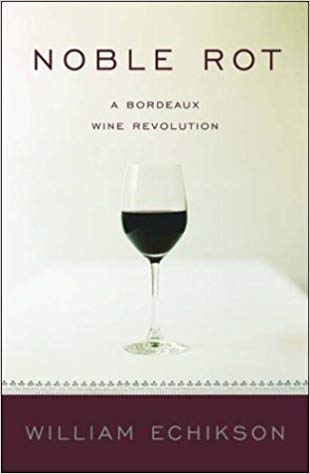A Bordeaux Vintage to Write Home About
You may have already heard this, but the 2015 vintage in Bordeaux is outstanding. According to our resident Bordeauxitarian in Hollywood, Jacques Moreira, everything that needed to happen happened. The stars aligned, the heavens opened, and the sunshine/rain/cool breeze combo proceeded exactly as needed to get the fruit to its most perfect state. Bloomberg gives the low down: “Four months of drought—plus a hot June and July—produced tiny, intense grapes with the thick skins that result in plenty of tannins. Rain came at exactly the right time to revive vines stressed by temperature and dryness. Then, cooler-than-normal weather in September and October allowed vignerons to pick when the grapes were perfectly ripe.” At its best, Bordeaux represents a fascinating tightrope between hedonism and structure, seductiveness and seriousness—and the 2015 vintage demonstrates this beautifully.
Certainly, there’s been a long history in Bordeaux of austerity out of the gate, then waiting for the magic of time to evolve the wines to their true potential. The lineup I’ve tasted from 2015 has a bit of that, but also there are many wines (and many great values) that are drinking beautifully right now. Decanter editor and the man behind the “Judgement of Paris” Steven Spurrier said that he saw 2015 as a very modern Bordeaux vintage. “It’s not like Bordeaux 10 years ago, when tannins could be hard as nails. In 2015, the fruit dominates the tannins and the acidity.” So I wanted to learn more. Why are some Bordeaux wines austere and some user-friendly upon release? And what does a modern vintage mean?
This curiosity led me to a book called Noble Rot by William Echikson, not with this question specifically in mind, but with a general interest in a region that I’d like to get to know better. The book was published in 2004 and it encapsulates a very specific time in the Bordeaux at the turn of the millennium. It tells the story of Robert Parker as a “democratizer” of a place that was deeply enmeshed in the old-school hierarchy of the 1855 classification. It tells the story of the “new wave” garagiste movement on the Right Bank, emblemized by Michel Gracia and Le Pin, who were drastically cutting yields and lengthening macerations to produce rich, extracted wines. Michel Rolland, the famous flying winemaker, was consulting for many wineries at the time and encouraging a rounder, more accessible style.
The book has a very specific point of view—pro-Parker, pro-Rolland—and it’s of course a contentious one, as many people even at that time considered their work an “internationalization” of tradition. It is the opposite point of view of, for instance, Mondovino, a documentary decrying globalization in the wine industry that came out about the same time as this book. I’m not here to argue wine politics today, but I am interested in considering all the factors at play at this consequential time in an effort to understand where we’re at now. In addition to personalities who influenced winemaking choices, I’m sure climate change is a significant reason for today’s more consistently ripe fruit, as well—it’s a factor all over the winemaking world. But here we are 18 years after the turn of the millennium, and it still feels relevant to understand these figures in a deeper sense than in an offhand dismissal. Despite where you lie on the Parker/Mondovino divide, it’s an engaging book, for its in-depth portraits of the people and a moment in time in this historic region. It also shows a snapshot of en primeur week, of pricing, of coops and brokers—I enjoyed its insights into the business and the culture of the wine industry in Bordeaux.
Tasting through this vintage has piqued my curiosity and appreciation for this storied region. To make a bottle of Bordeaux requires understanding terroir as well as understanding the art of blending. Like Champagne, it is primarily a blended wine, but one often grown on a producer’s own estate. So, in general, it requires skills at both growing and blending—I think it’s fair to say that Bordeaux wines are equally made in the vineyard and in the cellar, that there’s a yin yang relationship between human and soil that must be symbiotic for the final wine to reach its potential. I understand why so many people start their wine obsession with this region and eventually come back to it, because it has much to teach about a glass of wine, in sensory terms as well as historical. Sure, there are outside investors and business politics and it's not all romantic, but it is interesting and I'm looking forward to learning more!
In the meantime, here are a few of my favorites from different price points.
2015 Tanesse Cadillac, Côtes de Bordeaux $12.99
This is an incredible value. From sustainably farmed vines grown in gravel and clay soils, its blend is 55% Merlot, 40% Cab Sauvignon, 5% Cab Franc. Concentrated and lush but maintaining a balanced relationship to its oak. It shows notes of coffee and black cherries and graphite, finishing with fine tannins.
2015 Les Remparts Rouge, Graves $19.99
50-50 Merlot and Cab blend. It’s very elegant with an ethereal texture and an earthy sensibility: notes of forest floor, juicy cherries, and fresh-picked herbs. Drinks like a midsummer’s picnic in the middle of a redwood forest.
2015 l’Esprit de Chevalier Rouge, Pessac-Leognan $27.99
Second wine of Domaine de Chevalier. Pretty and floral with lots of finesse, aromas of blackberries and silky cocoa. Finishes on a note of fresh lavender and brown sugar.
2015 Pavie Macquin, St-Emilion $79.99
Organically farmed. 84% Merlot, 14% Cab Franc, and 2% Cabernet Sauvignon. Deep cherry, tobacco, rose petal, cassis, and cocoa notes, all very integrated and balanced. Has depth on the palate and is well-structured.
- Kate Soto


